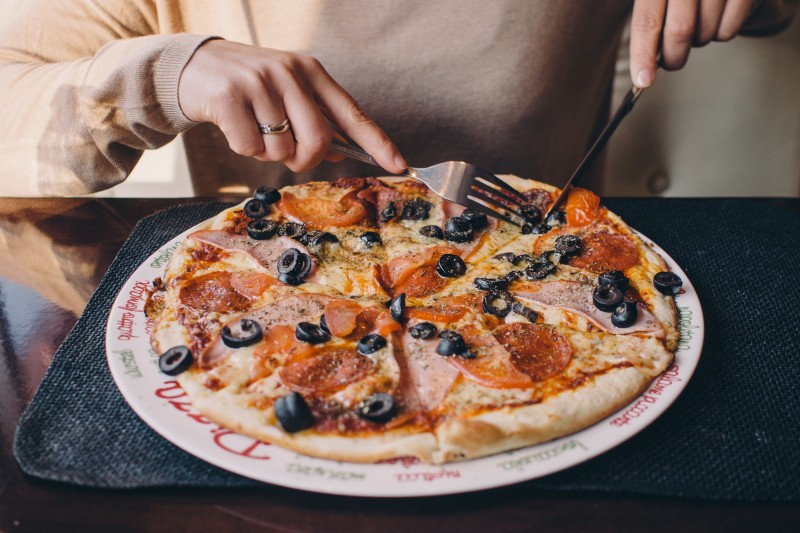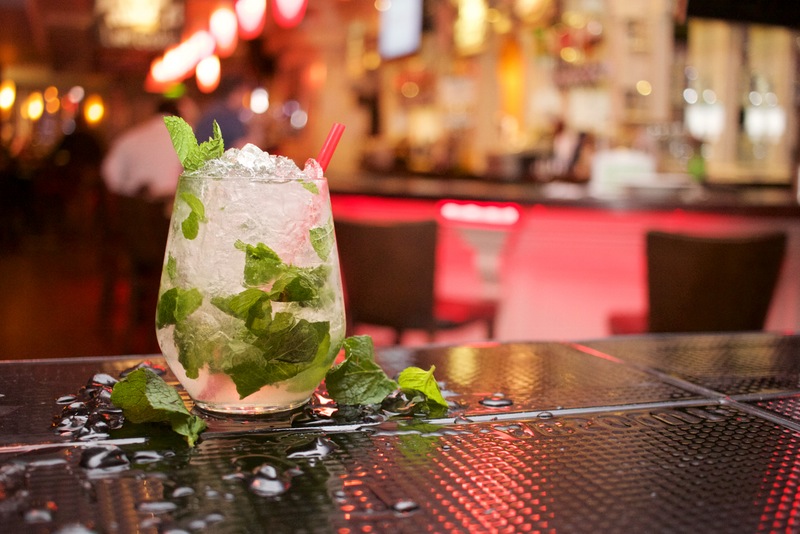How To Easily Lose Weight
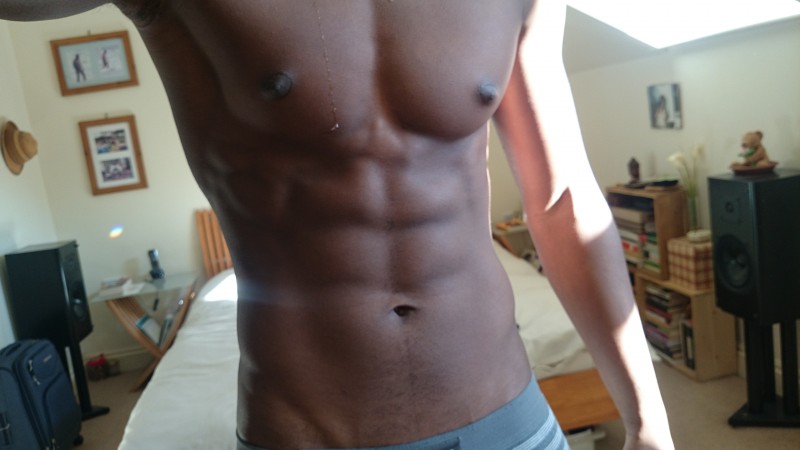
MYPROTEIN Deals – Help me release UNIGAINS Apparel!
WARNING: This is a 3400 word article, which will take some time to read. Bookmark it and share the love!
Let me ask you a question.. Are you fatter than you want to be?
Then answer for most of us is yes, yet for some reason or another, most of us never consistently work towards resolving this problem. Why?
It all comes down to us not believing that we can achieve this goal whilst living the life we live; we have been taught to believe that we have to stop eating all the foods we love, can no longer drink alcohol and have to do relentless amounts of cardio in order to lose weight.
So whenever we decide to lose weight this is what happens: we first say ‘I’m going to cut all sugars from my diet and eat low fat and do cardio 3 days a week for 45 mins’ – because that’s we have been taught to believe is the only way to lose weight.
Admittedly, doing so will probably yield some results.. but do they last? No.
We will end up following this ‘perfect lifestyle’ for a week or two, but then you get invited out to dinner, or you are sent on a business trip, or you give in to that takeaway that you just cannot live without.. you get thrown off track.
Now for such strict diets like these, you feel as though you have failed. ‘What’s the point in continuing? I can’t keep this up; I just simply cannot lose weight right now.’
This has probably happened to you – it has happened to me more times than I am proud to say.. and that is why I worked relentlessly to find a way to have it all.
It all comes down to asking 3 questions:
What does it actually take to lose weight?
How can I balance losing weight with my lifestyle?
How do I stay motivated to achieve this long term goal?
Let’s begin.
What does it actually take to lose weight?

I think this is where the media and news and the government really f*cks this up for us. We get spewed different loads of rubbish from everywhere telling us that they key to losing weight is cutting out fats, or eating low carb, or not eating eggs, or eating six small meals a day OH MY GOD IT ANNOYS ME SO MUCH.
The key to losing weight is having a calorie deficit.
IT IS SO SIMPLE.
But for those who do not know, let me explain…
Our bodies are like a balloon, with a hole in it.
Each day we eat food to pump air into this balloon (i.e. the food we consume), and air escapes through the hole (i.e. walking, eating, pooing, breathing, exercising etc.).
If we pump more air into the balloon than the amount of air that escapes, the balloon will get bigger – we will gain weight.
However, if the opposite happens and we are not pumping enough air into the balloon, it will get smaller – we will lose weight.
It honestly is that simple.
Now calories are a measurement of energy that we consume/expend; in the balloon scenario, it is the amount of air that we pump in/escapes the balloon. This is why you see on food packets the calorie content (abbreviation = cal/kcal). It is telling you how much air you are pumping into the balloon by eating this food.
Now the amount of air that escapes your balloon is called your maintenance calories. This is largely based on your height, weight, and general activity level.
If you’re sitting on your ass all day in an office, your balloon’s hole will be a lot smaller than the builder who is on his feet lifting heavy objects all day long; this means that the builder’s maintenance calories will be higher, and thus will need to eat more food for him to say the same weight (i.e. for the balloon to stay the same size).
So ultimately, you need to consume fewer calories than your maintenance calories in order to lose weight – you will be in a calorie deficit.
NOW HERE IS WHERE THE GOVERNMENT F*CKS UP AGAIN. They stress that we have to increase the amount of exercise we do in order to lose weight (i.e.increase the size of the hole), and so that is what we focus on, and get frustrated that we don’t see results… well let me explain something:
Let’s say your maintenance calories is 2300 calories (I will explain how to calculate this later), and you are currently eating 2300 calories of food. This means you are not gaining or losing weight as your calorie intake is equal to your caloric expenditure.
Now let’s say you want to lose weight, and in your current diet you pick up a donut after work to reward yourself for having a good day.
A large donut contains about 300 calories, and so does running for 10 minutes/mile.
Not eating the donut will reduce your calorie intake by 300 calories, which will put you in a calorie deficit. Running for 30 minutes will help you increase your maintenance calories by 300 calories, which will also put you in a calorie deficit.
Over 7 days this 300 calorie deficit will help you lose just over half a pound a week – This is 30 pounds a year.
Would you rather achieve this by:
- Running for 30 minutes each day.
- Not eating a donut.
I’m guessing your answer is B. Why would we get taught that we have to expend stupid amounts of time and energy, when we can spend 2 seconds making the decision to eat one less snack? It is just logic.
I cannot stress this point enough; this is where I believe that so many of us fail to achieve our weight loss goals, because of the mentality that more exercise is the best way to lose weight.
Remember, it takes so much less willpower to spends milliseconds deciding not to eat something then spending ages trying to fix it.
Let us move on to how to determine your maintenance calories and tracking how many calories you intake.
Determining Maintenance calories and Calorie Intake

You can only really get an estimate of this value, as it varies on a daily basis.
However, I advise going to this site to get an estimate, which for me has been fairly accurate.
Now in order to measure your calorie intake you have to track your calories. The website/app I prefer is MyFitnessPal (Android link here IOS here). It is so easy and simple to track your calories – you can barcode scan your food and it will instantly show you the amount of calories in that food!
It is paramount that you track everything you eat if you are dead serious about losing weight, especially at the start, as you need to develop a sense in how many calories there are in different types of foods, which will allow you to slowly be able to rely on MyFitnessPal less later on.
Personally when I really want to really shed pounds I track everything I eat in order to make sure I am losing weight, however when I am not too fussed and just want to maintain, I will just keep a mental track of the food I’m eating, as I have a rough idea of what to expect in terms of the amount of calories I am consuming.
Ultimately, it all comes down to your weight. Yes – The dreaded scale.
Over time if you are in a calorie deficit, you will lose weight.
Losing a pound of fat a week requires you to be in a 500 calorie deficit each day.
However, weight loss is not steady. Do not expect to lose exactly 0.14 pounds a day – my weight varies by up to 2 pounds daily depending on what I have eaten, water retention etc.
So if you think you are in a 500 calorie deficit and after a week it says you have stayed the same weight – don’t start eating less. I suggest waiting it out for two weeks and see if your weight still has not dropped. If it still has not, then I suggest slowly decreasing your calorie intake. This may indicate that your maintenance calories value is lower than you originally thought.
I tend to measure my weight as soon as I get up, and after I get ‘everything out my system’ (to put it politely).
But, if you are one of those people who constantly obsesses over the value of the scale, then put it away, and only track your weight every week.
Trust me by when I say that if you are counting your calories honestly, and are eating less than your maintenance, you will lose weight; You don’t need to look at the scale everyday, because you will know that you are losing weight – this is what I like so much about my method; I know that I am losing weight at the end of each day, instead of not being sure with other diets which do not involve calories counting.
Starting Off

When you start off, I suggest first spending a few days just eating as your normally would, but track everything you eat – even that bite off your mate’s lunch, or the sugar in your coffee, or the little bit of oil you put in the pan.. EVERYTHING.
If you notice that you are eating more calories that your maintenance calories, then slowly try and reduce your intake to your maintenance. This should not be too challenging as this is a number of calories you need to stay the same weight; your body is expecting to consume this amount of calories.
After a week or so of maintaining, decrease your calorie intake by 100 calories. Yes, only 100 calories.
If you want to ensure consistent, manageable weight loss, you need to take it slow.
Weight loss is all about changing your behaviour. You simply cannot do that overnight; it is so hard to change your mentally from:
‘uh there is a cookie on the counter I MUST HAVE IT’; to
‘Ooooh I don’t have space for a whole cookie, let me just have half’.
These changes take so much willpower and commitment, even for something so tiny.. But these are the sort of mini achievements which make your journey rewarding and fun!
Saying that you can’t ever have cookies again is a burden, and that is why with most programs you hate losing weight; you have to give up eating everything you love.
However, with my methods you start to enjoy just slightly improving yourself each day. This is because you’re not really sacrificing, but instead are controlling yourself – and being able to be in control of your actions brings a great feeling of satisfaction – and you do not have to fully give up anything.
Slowly you will feel like you have more control over yourself and your actions, and will be able to increase the size of your deficit; however do not go overboard. I personally think that anything beyond 700 calories is not maintainable.
Remember, we do not want a short fix; we want to make steady, maintainable progress in order to not only lose weight and get lean, but stay lean.
Also, you will start to lose more muscle mass, which is key to looking good. To ensure you are maintaining your muscle mass be sure to strength train and get enough protein.
We have now learnt what it takes to lose weight, and how we can know that we are making steady maintainable weight, and trust me when I say that you will feel good about it.
Now let’s talk about how to incorporate losing weight into your lifestyle.
How can I balance losing weight with my lifestyle?

Sure, we now know how many calories we need to eat to lose weight, but eating less calories is a tough thing to do – especially if you are someone like me who likes to eat a lot, and eat out a lot.
The first thing I would advise you to do is plan your day. Plan what you will eat for the day. This will help ensure that you do not go overboard, as you will know how much you can eat, and will space the foods throughout the day accordingly to ensure that you are able to stay on track.
I would like to introduce you all to intermittent fasting, and how it has transformed my weight loss journey:
I am one of those people who cannot go to bed hungry. I also like to eat a lot in one go.
Simply put, I am not designed to lose weight.
However after reading up on lots of different methods, I came across intermittent fasting; whereby one will only eat in an 8 hour window, and ‘fast the rest’ i.e. you eat your daily calorie intake in a shorter period of time.
Now this appealed to me, as this meant I could still have my large, satisfying meals, whilst still losing weight. It also meant that I wouldn’t go to bed hungry!
Apparently there are a load of different benefits to it, but to be honest, the studies are not really conclusive – what I do know is that it is a great way to lose weiht!
I do not exactly eat in an 8 hour window, but I try to delay when I first start to eat as much as I can.
At the moment of writing this guide, it is 12pm, and I have only drank water and black coffee, and I feel fine. I do not intend to eat up until 1/2pm, at which point I will consume a small lunch, and then I will feast out at dinner with a pizza and two servings of rice with 4 eggs and a can of tuna – and it will feel fantastic.
Currently I am only eating 1600 calories, so eating little bits throughout the day just always keeps me hungry – especially whilst at night when I am most vulnerable to lose control.
For me, my willpower is strongest in the morning, and dwindles later in the day, and therefore, I am able to resist not eating breakfast, and wait until later in the day to eat larger, more satisfying meals.
Admittedly, at the start is was hard. I tried to just dive straight into skipping breakfast, however, I gave in way too quickly, as it is so hard to do.
After failing, I took a very slow approach:
At first I just started to eat a little less; I would eat one less piece of toast to save 100 calories for the evening, or have one less piece of bacon.
Occasionally I would be in a rush and just would not eat breakfast, and even though I was hungry, I realized that my awareness levels were the same and my mind was still working at an optimal level – Even better.
Soon I started to not want to eat breakfast; although I felt more hungry, I felt better; I felt I was losing weight, and I felt energised.
However, I still did not stop myself from eating breakfast, because sacrifice does not work. Instead, I would just occasionally eat a bit at breakfast, but every time I just felt more fatigued in the late-morning – presumably to the sugar rush and the carbs settling in.
Eventually I just stopped – It was not even hard mentally. My belly was still hungry, but it was not worth the feeling of fatigue and tiredness that came with it.
To overcome the feeling of hunger, I just chewed on some gum and a had a coffee.
Yes I did still put sugar and milk in the coffee at the start, but slowly – over 11 months – I can now drink my coffee black. it takes time! I started intermittent fasting on the first day of 2015, and only in mid-November, that I can finally drink a coffee black.
I was one of those guys who didn’t actually drink coffee; I drank flavoured milk and sugar – I’m talking about 3 heaped teaspoons and basically half milk, with a tiny bit of coffee for flavour.
However slowly I reduced the amount of milk I put in, and cut the sugar by a tiny bit each time, so my body would adapt, and I could get used to the taste – and look at me now; drinking black coffee like a big boy.
Okay back to the intermittent fasting; I did not just go from not eating breakfast to only eating a small lunch and dinner.
I would start by eating at 11am, and repeat the same process; slowly eating less and less. Soon enough I learnt that I could not eat until 12pm, and occasionally till 1pm! Now if I want I can wait til 7pm if I wanted to.. and the ability to control myself feels so incredible and motivating!
Normally I simply eat at 12.30pm, trying to keep the calories around 600, in order to help save me some calories in the evenings after my workout, where I could then eat till I feel full and satisfied.
It all comes down to knowing your strong and weak points; can you live on a 600 calorie dinner? Or do you know that you would give in and over-indulge later on?
It also comes down to planning.
For example, I know that on a Friday lunch is a cheeky Nando’s with my work colleagues. I plan for this mentally, knowing that in the evening my food is going to be restricted. Being mentally ready for the battle allows me to not let myself give-in in the evenings as I know the situation I have got myself in. After winning the battle, you feel great; you overcome your belly’s annoying moaning and tantrums, and made positive steps towards your weight loss goals, all while still eating a whole chicken! (yeah, I really like Nando’s, and I like to eat a lot..)
Occasionally I will still eat a good english breakfast if the situation arises – for social reasons for example. It all comes down to be able to be flexible with your diet and making those daily adjustments to ensure that you are hitting your calorie goals.
My girlfriend is the total opposite to me; she eats the most measly amounts of food at a time, and feels full after it (I’m always in awe at how this is even possible). The point is, plan and eat how it suits you.
I know a lot of you are like me and want to still eat a buttload, but if you prefer small meals then by all means go for it!
As long as you are planning for the day ahead, know what food challenges and temptations you will face, and have planned how to overcome them, you are good to go!
How do I stay motivated to achieve this long term goal?

Simple. FORGET ABOUT IT.
Focus on making little daily wins everyday:
Put a quarter of a teaspoon less sugar in your coffee.
Wait 10 more minutes to eat.
Eat 50 less calories a day.
These are the sort of wins which motivate you.
Achieving long term goals are all about changing our behaviour. Simply looking at a scale will not do anything; we have to go about making those small, little changes to our attitude in order to stay on target to achieve your goals.
At the end of each day, answer the following questions:
What daily obstacle did I overcome today?
How do I feel after overcoming that goal?
What challenges do I face tomorrow, and how will I overcome them?
Addressing these three question will make you realize how you are improving as a person each day, and a result will stay motivated and committed, as it just feels good!
Losing weight and getting the abs I have right now have boosted my confidence, commitment, dedication, and personality in so many positive ways I could never imagine!
This is because you will be constantly committing yourself to a goal, and achieving it. It does not matter how small or big the goal is, the point is that you are becoming better than yourself everyday – nothing is more motivating!
Before you know it you will look back and realize just how far you have progressed as a person, and how much closer you are to achieving the mind and body that you so desire!
-Mike
Did you like the article? If so please give it a share!
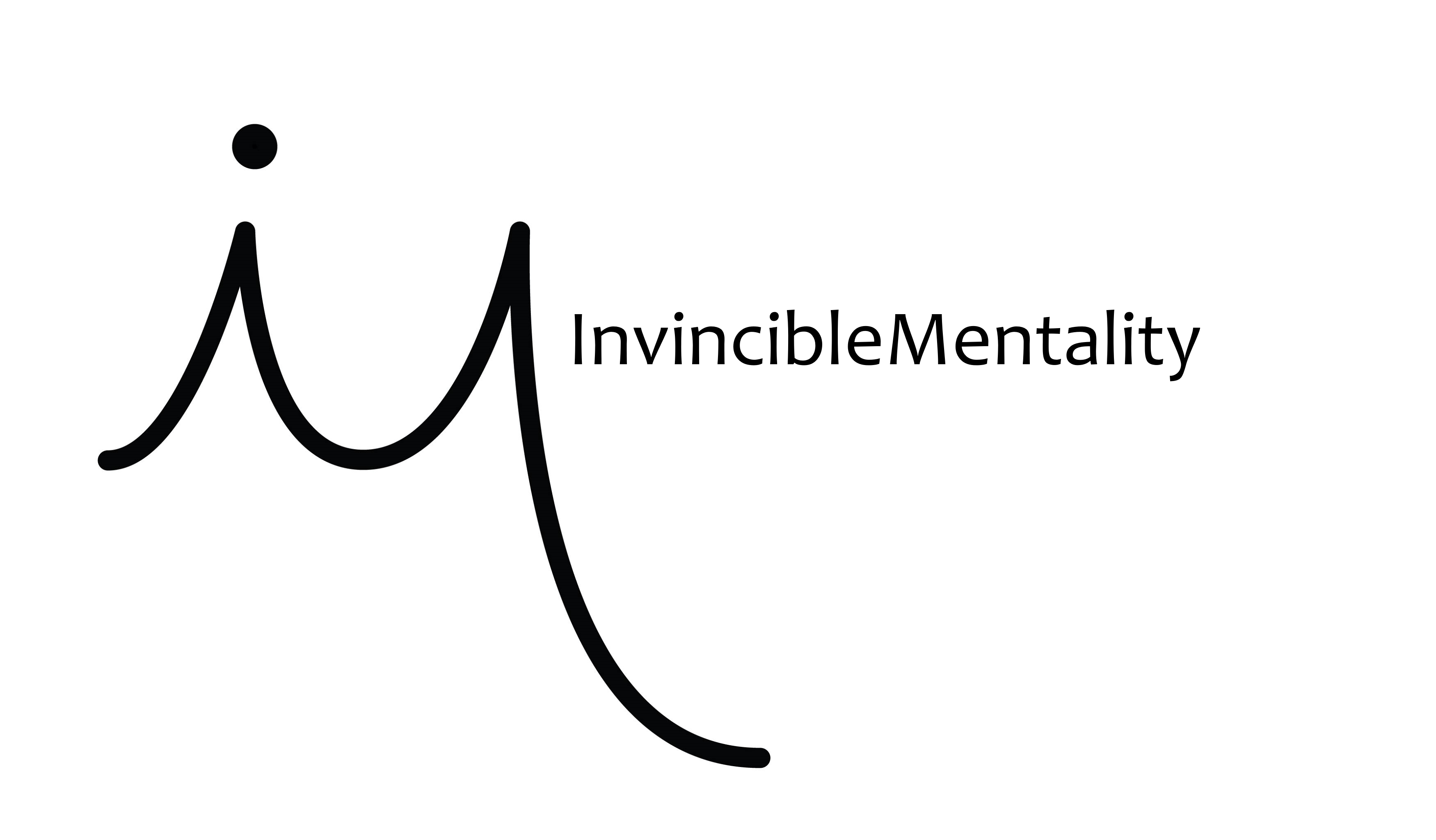
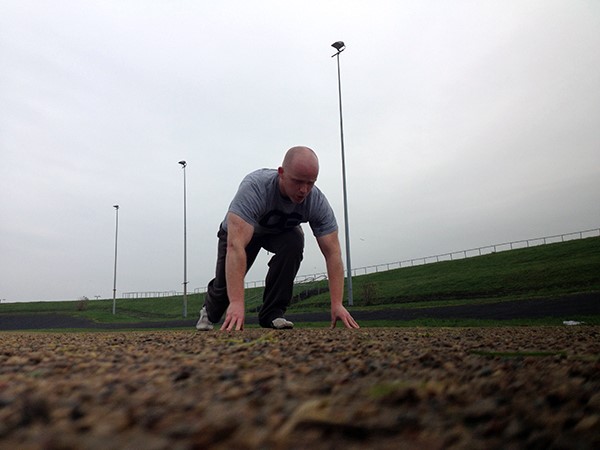

 Team GB athlete Amanda Lightfoot during a HIIT session in the gym recently.
Team GB athlete Amanda Lightfoot during a HIIT session in the gym recently.
